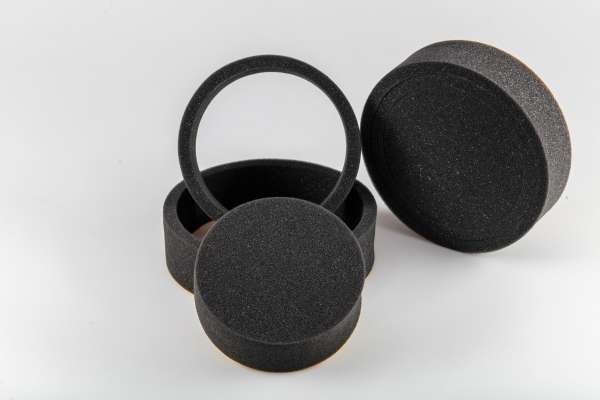
Jul 6,2023
Insulator rings are essential components in electrical systems, providing insulation and support to prevent electrical current leakage. In this informative blog, we will delve into the materials used in the construction of insulator rings. Understanding the composition of these rings is crucial for engineers, electricians, and anyone working with electrical systems. By exploring the properties and benefits of different materials, you'll gain insights into how insulator rings contribute to electrical safety and reliability. Discover the diverse range of materials utilized in insulator ring manufacturing and their specific applications in various industries.
Insulator rings play a crucial role in electrical systems, providing insulation and support to ensure the safe and efficient flow of electrical current. These rings act as barriers, preventing leakage of current, protecting equipment, and maintaining electrical isolation. By isolating conductive components, insulator rings prevent short circuits and electrical shocks, enhancing the overall safety and reliability of electrical systems. Additionally, insulator rings offer mechanical support to maintain the proper alignment and spacing of conductive elements, minimizing the risk of damage or failure.
Insulator rings are manufactured using a variety of materials, each offering unique properties suited for specific applications. The choice of material depends on factors such as electrical requirements, environmental conditions, and mechanical strength. Let's explore some common materials used in the construction of insulator rings and understand their characteristics, benefits, and applications in electrical systems.
Ceramic materials, such as porcelain and alumina, are widely used in insulator ring production due to their exceptional electrical insulation properties. Ceramic insulator rings can withstand high voltages, resist electrical conduction, and exhibit excellent dielectric strength. They are highly resistant to temperature fluctuations, corrosion, and chemical exposure, making them suitable for a wide range of applications in power distribution systems, transformers, high-voltage transmission lines, and electrical equipment where reliable insulation is crucial.
Glass is another material employed in the manufacturing of insulator rings, offering a combination of transparency and insulating properties. Glass insulator rings provide excellent electrical insulation and possess high resistance to heat, moisture, and chemical agents. They are commonly used in low-voltage applications, electrical connectors, and electronic devices where visual inspection is necessary. The transparency of glass insulator rings allows for easy detection of potential defects or contaminations, ensuring the integrity and reliability of electrical systems.
Polymer-based materials, such as polyethylene (PE) and polypropylene (PP), are favored for their versatility and lightweight design in insulator ring manufacturing. Polymer insulator rings offer excellent electrical insulation properties, high resistance to weathering, and durability. They are ideal for applications requiring flexibility, such as overhead power lines, telecommunication cables, and outdoor electrical equipment. Polymer insulator rings are known for their ease of installation, reduced weight compared to traditional materials, and resistance to vandalism and environmental stress, making them a cost-effective choice for various electrical systems.
Composite materials, composed of a combination of fiberglass and resin, are widely used in the production of insulator rings. These materials offer a unique blend of strength, durability, and excellent electrical insulation properties. Composite insulator rings exhibit high mechanical resistance, UV resistance, and resistance to harsh environmental conditions. They are commonly utilized in high-voltage power transmission and distribution systems, railways, and other applications where a lightweight yet robust insulator solution is required.
In certain applications involving high temperatures, specialized materials are used to ensure the insulator rings can withstand extreme thermal conditions. Materials such as ceramic composites, mica, and silicone rubber are employed in insulator ring production for high-temperature applications. These materials offer exceptional thermal stability, resistance to heat, and excellent electrical insulation properties. Insulator rings designed for high-temperature environments are commonly found in industries such as aerospace, power generation, and industrial heating systems.
Different industries may require specific materials for insulator rings to meet their unique needs. For example, in the railway industry, insulator rings made of synthetic materials such as phenolic resin offer excellent mechanical strength, resistance to vibrations, and electrical insulation properties. In the oil and gas sector, insulator rings constructed from materials like epoxy resins and silicone rubber are used for their resistance to corrosive environments and electrical insulation capabilities. Customized insulator rings tailored to specific industry requirements ensure optimal performance and safety in diverse applications.
Selecting the appropriate insulator rings for electrical systems is crucial to ensure optimal performance and safety. Factors such as voltage requirements, environmental conditions, mechanical strength, and material compatibility should be considered. Working closely with knowledgeable suppliers and engineers can help determine the most suitable material and design for insulator rings based on specific system requirements. By choosing the right insulator rings, electrical systems can achieve enhanced reliability, improved electrical insulation, and prolonged service life.
In conclusion, insulator rings play a vital role in electrical systems, providing insulation and support to ensure safe and efficient electrical current flow. These rings are manufactured using various materials, including ceramics, glass, polymers, and composites, each offering unique properties suited for specific applications. Understanding the characteristics and benefits of different materials helps engineers and electricians select the appropriate insulator rings for their electrical systems. By investing in high-quality insulator rings constructed from the right materials, electrical systems can achieve optimal performance, enhanced safety, and increased reliability.